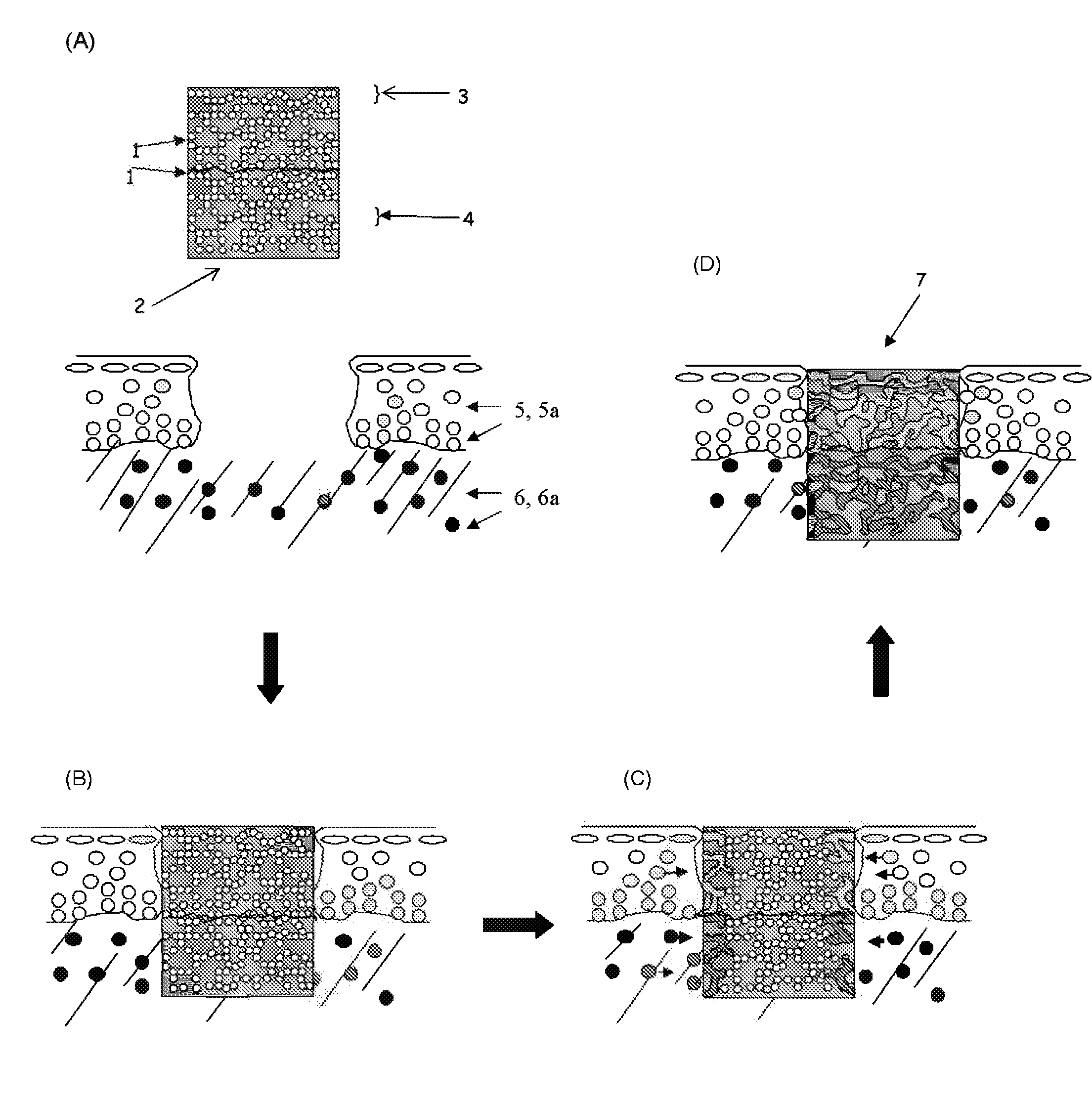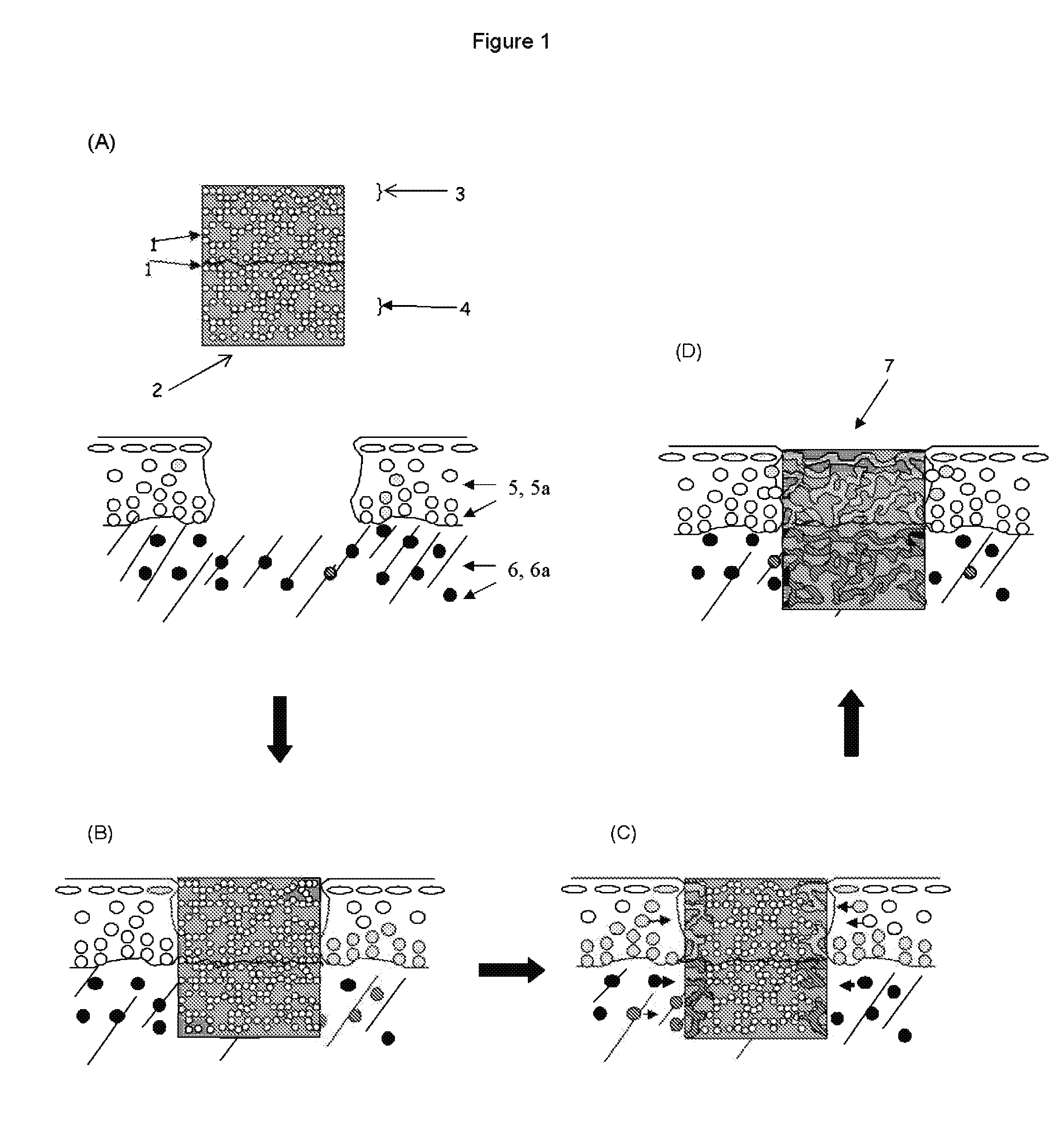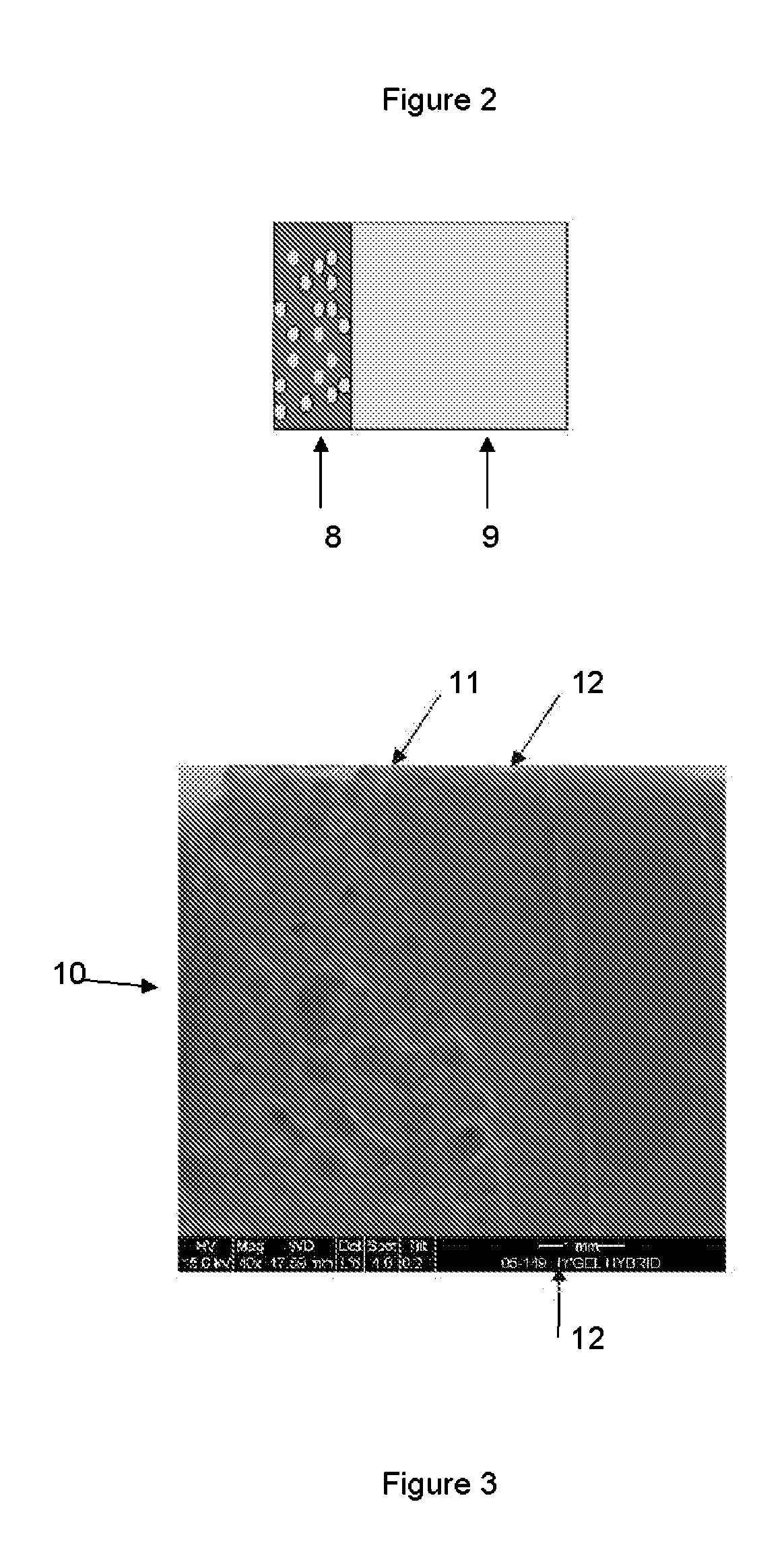Porous non-biodegradable hydrogel admixed with a chemoattractant for tissue replacement
a non-biodegradable, hydrogel technology, applied in the field of permanent hydrogel implants, can solve the problems of inability to fully replace the total joint, the damage of the articular cartilage is one of the most expensive of the debilitating diseases, and the permanent implants made from metals and plastics, which are made from total joint replacement metals and plastics, etc., to achieve the effect of facilitating in vivo tissue ingrowth and integration
- Summary
- Abstract
- Description
- Claims
- Application Information
AI Technical Summary
Benefits of technology
Problems solved by technology
Method used
Image
Examples
example 1
Microspheres Manufactured and Dispersed in a Poly(Vinyl Alcohol) Solution
[0049]Dilute PVA aqueous solution was prepared by dissolving 88% hydrolyzed PVA in deionized water at 83° C. for 2 hours to form an external aqueous phase. PLGA with a lactic-to-glycolic ratio of 50:50 (Medisorb® 5050DL 3.5A, I.V. 0.40 dl / g) was dissolved in organic solvent (dichloromethane / acetone), and suspended in sterile PBS or the chemoattractant of interest to form an internal aqueous phase.
[0050]Ten ml of each solution was dispersed in continuous phase and homogenized for 5 minutes to produce an oil-in-water emulsion. The microsphere size was controlled by the speed of stirring. Typical diameters range from 2 μm to 100 μm. The emulsion was transferred onto a magnetic stir plate for four hours to remove dichloromethane and to harden the microparticles. The microparticles were collected through a centrifuge at 15,000 rpm at 10° C. for 45 minutes. The pellets were frozen at −80° C. and then freeze-dried ove...
example 2
PLGA Microspheres Suspended as an Oil-in-Water Emulsion in PVA Matrix
[0053]Dilute (10 wt %) PVA aqueous solutions were prepared by dissolving PVA (Elvanol 71-30; Mw˜96,000) from DuPont (Wilmington, Del.) in deionized water at 83° C. for 2 hours. PLGA (Medisorb® 5050DL 3.5A) supplied by Alkermes, Inc. (Cincinnati, Ohio) was dissolved in dichloromethane (DCM) where the amount of DCM used was 10 times the weight of PLGA, and the mixture was sonicated using a Branson (Danbury, Conn.) Bransonic® 1510 ultrasonic cleaner until dissolved. The dissolved PLGA was added to the PVA and the solution was tented with tinfoil and magnetically stirred at 300 rpm for 10 minutes. The mix was poured into a mold and manually subjected to 5 cycles of freezing at −20° C., each for 23 hours, with 1 hour of thawing at 25° C. in between each freeze cycle.
[0054]Supplemental information for EXAMPLE 2.
[0055]Method of manufacture and analysis: The amount of PLGA solution added was varied as a weight percent of P...
example 3
Water-in-Oil-in-Water Solvent Evaporation / Extraction Method (IGF Chemoattractant)
[0065]A 0.15 ml internal aqueous solution (0.0016 M Citric Acid, 5% w / v human serum albumin (HSA), 2.5 mg additional HSA, and 1 mg chemoattractant (insulin-like growth factor—IGF)) was added to 2 ml of an organic solution (1.5 ml methylene chloride, 0.5 ml acetone) containing dissolved poly(lactic acid) (50 mg). The combined solution was sonicated for 15 seconds in a glass vial, then added to 30 ml of a 5% w / v external aqueous solution of PVA to achieve a multiple emulsion and stirred at 500 rpm for 1 minute. The combined PVA solution was then added to 400 ml solution of 10% PVA-PVP in water and stirred at 500 rpm for 25 minutes to remove the organic solvent, where the 10% PVA-PVP solution was prepared by dissolving 99% by weight polyvinyl alcohol (PVA, Elvanol™ Grade 71-30, DuPont, Wlimington, Del.) and 1% polyvinyl pyrrolidone (PVP, MW=40,000, Sigma Aldrich, St. Louis, Mo.) in deionized water at 90° C...
PUM
| Property | Measurement | Unit |
|---|---|---|
| diameter | aaaaa | aaaaa |
| instantaneous compressive modulus | aaaaa | aaaaa |
| mole ratio | aaaaa | aaaaa |
Abstract
Description
Claims
Application Information
 Login to View More
Login to View More - R&D
- Intellectual Property
- Life Sciences
- Materials
- Tech Scout
- Unparalleled Data Quality
- Higher Quality Content
- 60% Fewer Hallucinations
Browse by: Latest US Patents, China's latest patents, Technical Efficacy Thesaurus, Application Domain, Technology Topic, Popular Technical Reports.
© 2025 PatSnap. All rights reserved.Legal|Privacy policy|Modern Slavery Act Transparency Statement|Sitemap|About US| Contact US: help@patsnap.com



